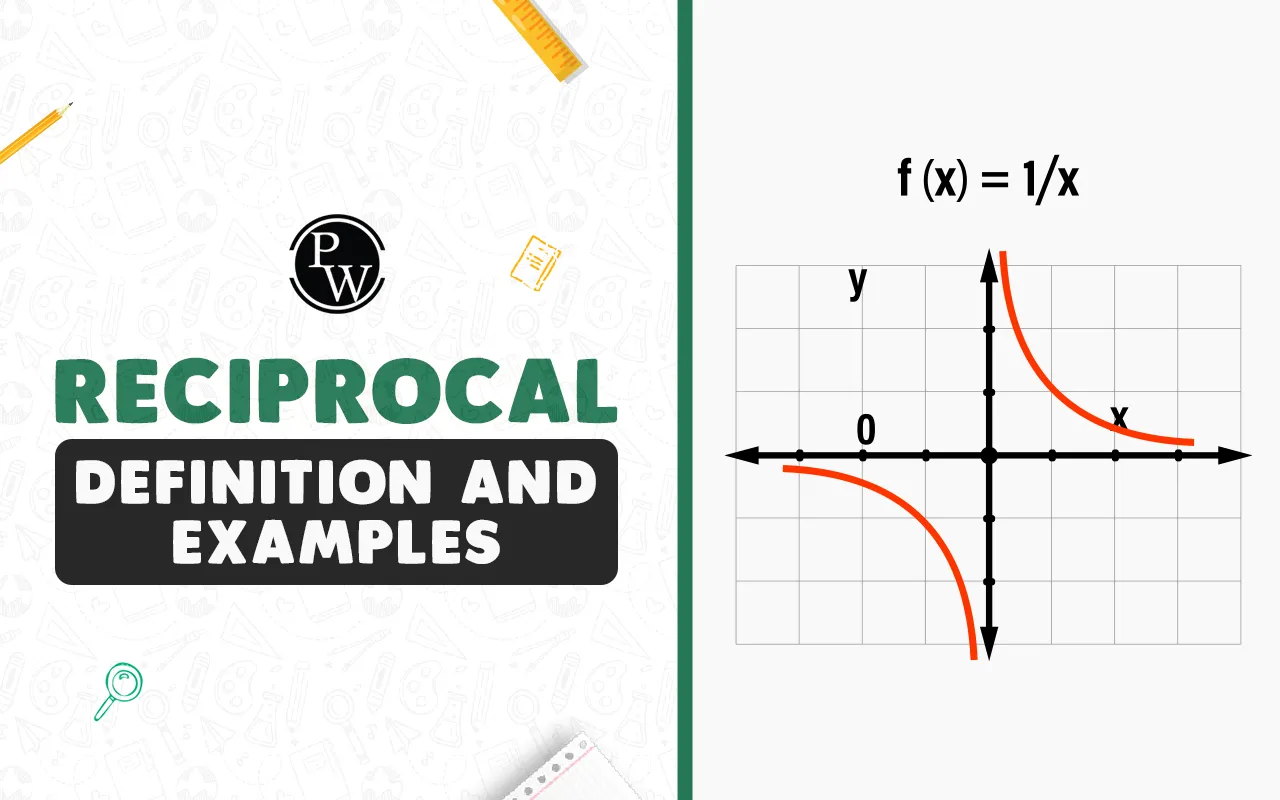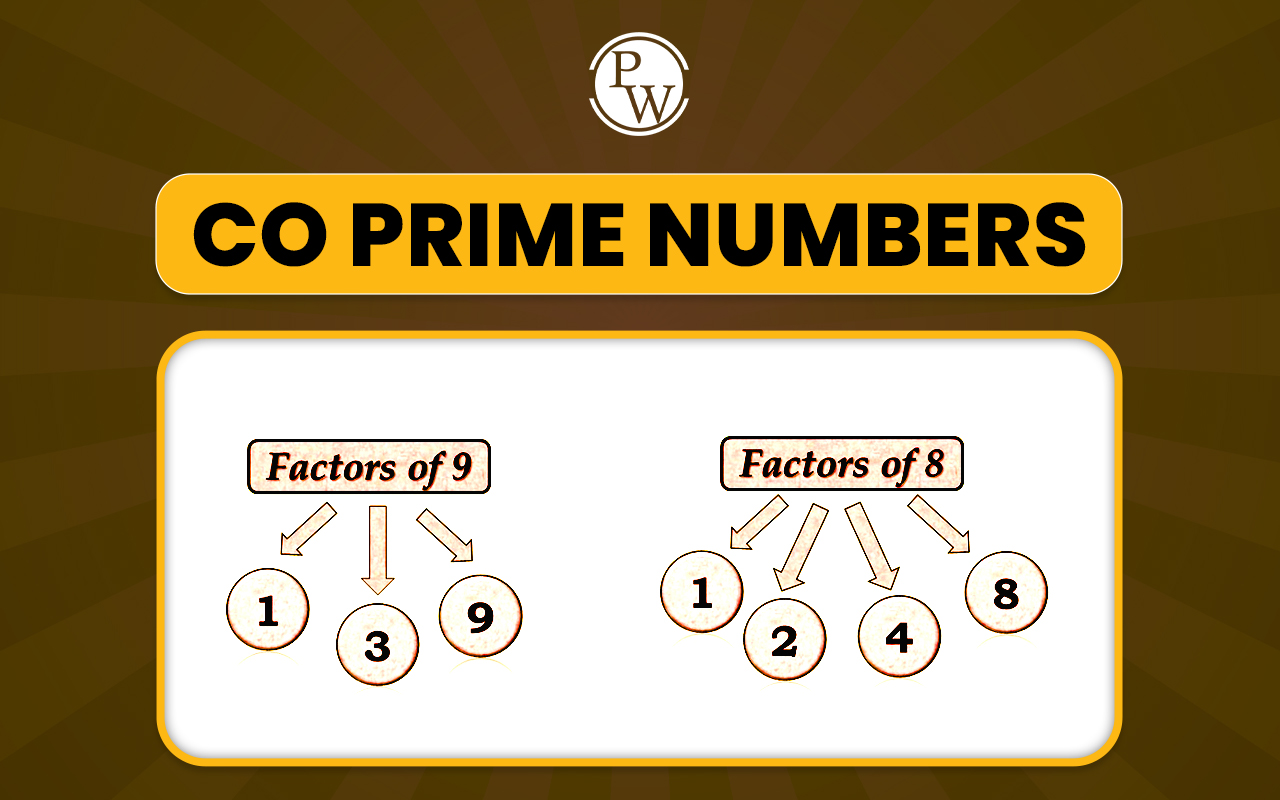

What is Reciprocal?
Reciprocal is an important concept in maths. The word “reciprocal” comes from the Latin word reciprocus, which means “returning.” In simple words, the answer to the commonly asked question, "What is reciprocal?" is that it is a number that, when multiplied by the original number, gives 1 as the answer. Because of this, it is also known as the multiplicative inverse.
For example, the reciprocal of the number p is 1/p, and the reciprocal of 7 is 1/7. This works for almost all numbers except 0, because 0 does not have a reciprocal. Understanding what is reciprocal is very helpful in solving fractions, decimals, and many other math problems. To learn how to find the reciprocal of a number, keep reading.
Read more: Pythagorean Triples
Reciprocal Definition
Reciprocal definition in mathematics is: The reciprocal of a number is the division of 1 by that number. We can also define it as if the product of two numbers is 1; these numbers are called reciprocals of each other. Reciprocals are not only for whole numbers. You can find the reciprocal of a fraction, the reciprocal of a mixed number, or even the reciprocal of a negative number. Let's understand how to find reciprocals in maths.
How to Find the Reciprocal of a Number
In order to find the reciprocal of a number, you divide 1 by that number. This is also called the multiplicative inverse. For example, the reciprocal of 8 is 1 ÷ 8, which is 1/8. Another way to remember it is that when you multiply a number by its reciprocal, the result is always 1.
The reciprocal of a reciprocal always gives you back the original number. Understanding this method helps in solving fractions, decimals, and many algebra problems quickly and easily.
Read more: Basic Maths Symbols With Name
Reciprocal of a Fraction
The reciprocal of a fraction is found by swapping its numerator and denominator. Every fraction has a numerator (top number) and a denominator (bottom number). When you interchange them, you get the reciprocal.
For example, the reciprocal of 7/10 is 10/7. Similarly, for a fraction with variables, like x/y, the reciprocal is y/x. Understanding how to find the reciprocal of a fraction makes it easier to solve division problems and questions with fractions in equations.
Reciprocal of a Mixed Number
A mixed number is a number that has a whole part and a fraction part together. For example, 2 1/3 is a mixed number because it has 2 as the whole number and 1/3 as the fraction. To find the reciprocal of a mixed number, you need to first convert it into an improper fraction. Then, interchange the numerator and denominator to get the reciprocal.
For example, 2 1/3 can be written as the improper fraction 7/3. Its reciprocal is 3/7. The same method is used to find the reciprocal of a mixed number that has variables as well.
Reciprocal of a Negative Number
Reciprocal of a negative number is its inverse with a minus sign. To find it, you first write the number as a fraction with 1 as the numerator. Then, swap the numerator and denominator and keep the negative sign.
For example, the reciprocal of -24 is -1/24. Similarly, for a variable like -3x, the reciprocal is -1/(3x). Understanding the reciprocal of a negative number helps you a lot in solving equations and fraction problems involving negative values.
Also Read: Surface Area of Cylinder
Boost Your Child’s Confidence and Speed in Maths with CuriousJr
Is your child struggling to solve math questions in exams or repeatedly making mistakes in calculations? Many children need extra practice and guidance to build speed and accuracy in mathematics.
CuriousJr’s Mental Maths Online Classes are made for students in classes 3rd to 9th to make learning math simple, fun, and interactive.
-
With live classes, easy-to-understand explanations, and a two-teacher model, your child gets the support and attention they need to improve with time.
-
These online maths learning classes follow the school syllabus, provide help with homework, and strengthen your child’s overall understanding of important math concepts.
-
With features like regular progress tracking and performance updates, you can see how your child is improving over time.
Enroll in a demo class today and help your child become quicker, more confident, and more accurate in math with the CuriousJr Mental Maths program.
Reciprocal FAQs
What is a reciprocal in math?
How to find the reciprocal of a fraction?
Give two examples of the reciprocal of a mixed number.
Find the reciprocal of a negative number, which is -5.
Can we find the reciprocal of variables?













